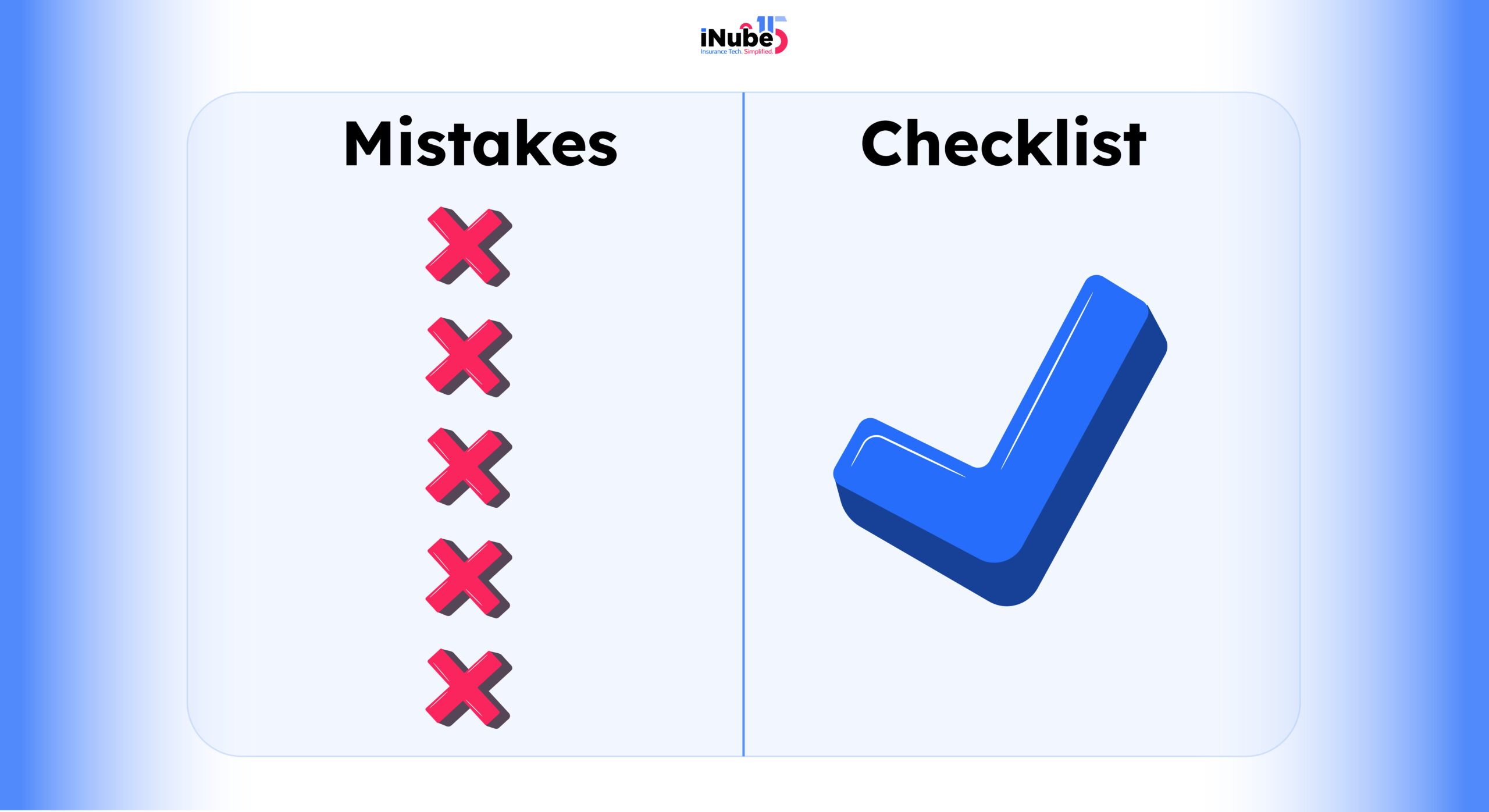This is not a regular guide that just gives you a list of the costly mistakes that you can avoid before you hop onto choosing an insurance software vendor; it’s more of a reality check that most of the insurers cannot avoid. Picture this- a major insurance company has spent a whopping $3.2 million and 18 months implementing their “perfect” solution, only to experience that the claims processing has significantly slowed down to a crawl and customer complaints triple, all because of the few mistakes that they could have avoided while selecting an insurance software vendor.
This is exactly where insurers need to be vigilant in choosing their insurance software vendor, who not just gives them a competitive edge but also allows them to seamlessly scale. Dive in for more!
Common Mistakes that Insurers Need to Avoid
Choosing the right insurance software vendor is an extremely important function. Here are the top mistakes that can cost insurers more than they could anticipate:
Prioritizing Price over Total Cost of Ownership
One of the most common pitfalls that insurers do not focus on is prioritizing price over the total cost of ownership. Many organizations solely focus on the licensing costs, and in this pursuit, they miss out on the bigger financial picture. However, the reality remains quite different from what the insurers anticipate.
The cheapest insurance software solutions often become the most expensive over time. Not only that, but there are also many hidden costs that essentially emerge during the implementation, customization, training, and overall maintenance. In fact, a recent study has found that organizations focus on underestimating the total cost of implementation by an average of 40%.
The solution: To tackle this mistake tactfully, insurers can leverage a few measures, such as evaluating the complete cost structure, which includes implementation and customization fees, data migration expenses, training and change management costs, ongoing maintenance and support, followed by integration expenses with existing systems. Another additional tip to keep in mind here is to factor in the cost of disruption during implementation, to save from any hidden costs at a later stage of selection.
Underestimating the API Integration Complexity
The most common assumption of insurers when it comes to understanding the API integration complexity is that the modern insurance solutions will automatically integrate seamlessly into your existing technology stack.
However, the reality of this assumption is quite different from reality. Modern insurance software solutions do not automatically mean that they will seamlessly integrate into your system and have advanced API support. Poor API integration often leads to a lot of project delays and cost overruns. Legacy systems often require complex middleware solutions or custom API development, which the vendors rarely include in their initial quotes.
The solution: Before going ahead in selecting an insurance software vendor, it’s important to conduct a thorough integration assessment, which essentially includes mapping of all the systems that need to connect, evaluating the API documentation quality and the completeness, testing API performance under realistic load conditions, assessing real-time v/s batch processing capabilities, and verifying the data format compatibility.
Inadequate Data Migration Planning
This is one of the most common mistakes that insurers take into account when they are actively searching for an insurance software vendor. Treating data migration as a simple “Lift and Shift” operation, which can be handled quickly, will be the real challenge.
Assuming the operation from a preconceived lens can be quite challenging when viewed through a realistic lens. Data migration and related delays can consume a significant portion of implementation budgets, with some companies reporting cost overruns of up to 50% and delays of more than a quarter. However, adding poor planning to this further adds to data quality issues, business disruption, and extended go-live delays.
The solution: To tackle this challenge smartly, insurers need to develop a comprehensive data migration strategy much earlier, which includes cataloging all the data sources and formats, identifying data quality issues, mapping the data relationships and the dependencies, and finally determining the data retention requirements.
Ignoring Legacy System Modernization Requirements
This is another common mistake that insurers cannot avoid before choosing insurance software. Most insurers believe that new insurance software can simply overlay the existing legacy systems without even addressing the underlying technical debt.
In reality, legacy system modernization is rarely optional and essentially attempts to integrate modern insurance solutions with an outdated infrastructure, which creates performance bottlenecks, security vulnerabilities, and maintenance nightmares.
The solution: The key solution to tackle this problem intelligently is to assess your modernization holistically, which includes system assessment of the audit current technology stack and dependencies, identifying the systems that are becoming operational loose ends, evaluating the security vulnerabilities in the legacy systems, and assessing the performance limitations.
Overlooking the Scalability Requirements
Insurers essentially jump into selecting insurance software vendors based on their current needs, without even actually considering future growth and changing requirements.
However, insurance companies rapidly face evolving regulatory requirements, market conditions, and customer expectations. The systems that cannot scale become one of the most expensive technical debts within just a span of 2-3 years.
The solution: The insurers need to plan scalability across multiple dimensions that include both measuring the performance scalability and functional scalability.
The Way Forward
The digital transformation in insurance is not just a destination but a journey. The vendors you choose today must be able to shape the organization’s ability to swiftly adapt, compete, and thrive in an increasingly digital marketplace. Avoiding these mistakes can position the insurers to drive real business value, support the growth of ambitions, and also offer a foundation for continued innovation.

Archismita Mukherjee
Insurance Content Analyst


